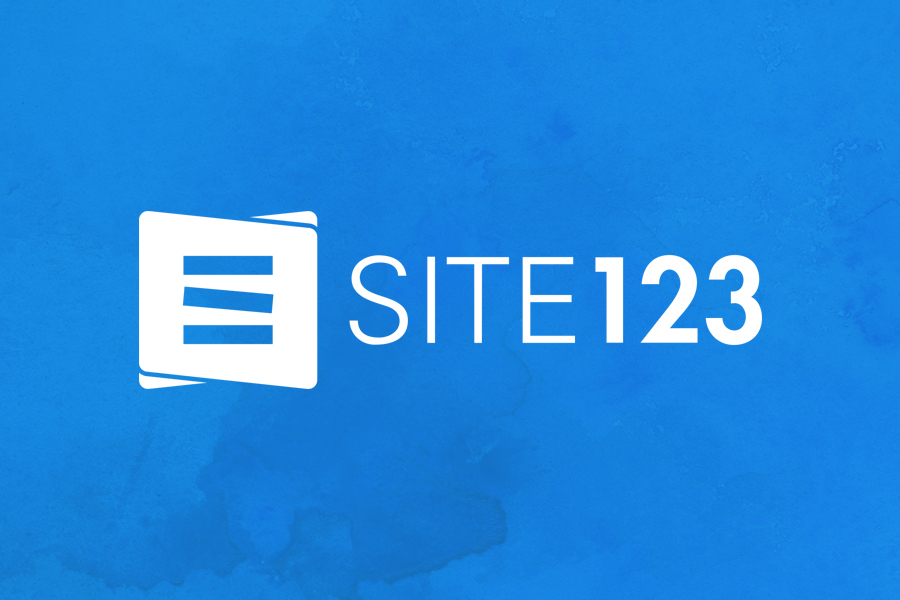Adobe Muse review
Comparison Reviews by Industry Experts
Overview of Adobe Muse
Adobe Muse site builder does not actually exist: in 2018, Adobe Company wrote about the discontinuation of the service in 2020 (and that it would no longer be supported beginning from March 2020). Instead of Adobe Muse costly product, today there are three separate products on the market called ‘XD’, ‘Portfolio’, and ‘Spark’. They have their own destinations, pricing, and features – but in order to make people informed (even those who have never heard about Adobe website builder before), in this reviewing article, we will still compare those tools with Adobe Muse and will tell more about them. It may seem like the mixture of different knowledge but we’ll try to make things clear and concise.
What is Muse CC? Adobe Muse CC site builder, as well as the successor products, are very niche products. They are NOT for the wide circle of users and they ARE oriented only at those specialists who work with other Adobe products like Photoshop, Fireworks or InVision, so as pretty much as how much is Adobe Muse. So, the graphics and video designers are honored the most with the arrival of products, while others will find it very difficult to work. Actually, the essence of Adobe Muse website builder, as well as its successors, is not SOLELY to build a site but to rely heavily on the design of the site, creating the functionality around of it. In most cases, a user is given a blank page to start work with and as he or she works on the graphic of the site, fills it, the site is gradually being built. As you can see – Adobe Muse CC builder is NOT a regular site builder with visual simplicity, ready-to-run templates, and drag-and-drop. It is the tool for the thoughtful work of people having special skills. Are you one of them? If yes – continue reading. If not – well, we suggest you find an intuitive site builder to make a site quickly and without any special knowledge.
A general overview of Adobe Muse
What is Adobe Muse and is it easy to use?
If you have been using Photoshop, Fireworks, InVision or other Adobe products in the past – working with Adobe Muse software (as well as with ‘XD’, ‘Portfolio’, and ‘Spark’ products) shall be easy to you but hard for the people without such skills. So, the general answer is ‘no’, that’s not easy.
What are Adobe muse prices?
It depends on the specific product you choose – ‘XD’, ‘Portfolio’, and ‘Spark’. We’ll consider the pricing in more details below.
Pricing of Adobe Muse
Since the last update to Adobe Muse website creator was launched in March 2018, we are no longer considering Adobe Muse reviews but focus on three its successors:
- ‘XD’:
- A free plan in the pack named ‘Starter’ is based on the downloadable version of the software and includes 1 active shared prototype and 1 design spec, a limited set of free Adobe fonts, and Cloud storage limited to 2 Gb.
- The next plan called ‘XD’ goes for $9.99 a month per 1 user and allows having the unlimited number of design specs and prototypes, all set of fonts and 100 Gb of cloud storage.
- ‘XD for Teams’ goes for $22.99 a month and add to the features specified in ‘XD’ the following ones: some exclusive business features, webinars to gain better knowledge, Admin console based on web and the premium technical support.
- ‘Portfolio’ is great to showcase portfolios for people of creative professions (writers, designers, artists, sculptors, event managers, novelists, painters, bakers, cooks, and others). It is possible to select from the two: $9.99 a month for a light portfolio start with 2 products only (Photoshop & Lightroom). $52.99 offer broad access to 12 different products.
- ‘Spark’ is great for small pages (including landings), which can be newsfeed, small portals, 1-product sites, and blogs. A free subscription package offers easy access of several thousand free pics. For €12.09 a month, individuals may use it. For €24.18, a team of several people accessing through the admin panel can use it.
Advantages and disadvantages of Adobe Muse
Pluses:
- Many different tools of successors of Adobe Muse program site editor are possible to be enjoyed by professional of graphic design.
- Master page of Adobe Muse web design solved issues of design discrepancies amongst the pages of 1 site.
- There are many third-party tools and products to integrate with, which are going to help build a site and pack it with features – as successors of Adobe website creator are strong only in the visual part, not in the functionality (like sales, shipment, discounts, promos, back systems integration like CRM, accounting, databases like MySQL and other functional tools). The use of third-party tools can ease all these. You also can integrate with social media and even other site builders or a part of their software – like WordPress.
- Text synchronization feature – to edit it in one place and distribute between the pages using this text automatically.
- Great design toolkit with an easy-to-comprehend interface (for specialists, though, not for novice users).
- Exporting the ready site (at any stage of its readiness) to share or distribute.
- The free trial is Adobe Muse price that is the lowest and a nice thing sought for by the users.
Minuses:
- If you are not a pro in graphic design, you are facing a lot of difficulties of work inside of successors of Adobe website design software.
- It is impossible in this platform to make heavy sites packed with functionality. This also concerns online e-commerce. Successors of this website builder are oriented at visual beauty and high individualism of templates.
- There is no automated creation of mobile responsive design – when planning and drawing a page, everyone should take care of mobile and tabled adjustability on its own, actually, creating as minimum as three different sketches of designs for these three types of screens and keeping them up to date and relevant among each other when changes to the website occur.
- As there is the space to make your creativity blossom and thrive, it is necessary to draw and tune every element of graphics on your own, without some embedded vastness of ready-to-use elements.
- There are no predefined templates (unless you buy one from the community or find a free to use).
- It will be hard for newbies to make things beautiful and correct when they add elements to avoid overlapping or scattering of the work because of the addition of a new element into a finished work or deleting one, and akin.
- The toolbar is powerful for a person who knows what those icons mean and how to work with them properly. But that is not a point of ease for a novice, which can be overwhelmed.
- There is no automated generation of HTML code in XD product and there are much more manual things to do in ‘Portfolio’ and ‘Spark’ products.
- No newsletter or membership system.
- No integration with RSS/podcasts of audio.
- No donations system.
- No multilingual websites (unless you do them manually through hard coding).
What features does Adobe Muse have?
- The basis of successors of this website builder is SaaS – (Software as a Service), which is a popular working model of nearly every website creator: they allow you to use some specific software on the basis of usage limited in time. As a rule, the time period is limited to 1 month, for which users make payments to have a continuous possibility to use features of this software. The payments can be done month-to-month, annually, biannually or for another term. As soon as a user discontinues payment, the access to the service restricts or halts until the next payment is done. The product here is the software with certain capabilities. In the case with other website creators, it is the possibility to host and run the website making changes to it and using the features of admin account (see stats, do backups and other prescribed actions). In the case with successors of Adobe website creator, it is the possibility to use graphic design software, which usage is rendered on a monthly basis.
- Impressive design toolkit, to which it is fast to get used to (for professionals in Adobe products).
- Categorized widgets. For instance, in the folder with ‘Social’ widgets, one can find ‘Facebook Like’, ‘Facebook Follow’, ‘Facebook Comments’, ‘Google+’, ‘Google Maps’, ‘LinkedIn’. Convenient and cleverly organized.
- Easy copy and paste.
- In the time of Adobe website creator, it did not have any built-in theme but had over 10,000 external ones. It is logical to assume that successors of Adobe website creator will need time to reach this number collectively again but thousands of already existing themes should economize the large chunk of work. You can find free and paid themes as well.
- Editing of CSS and HTML – it’s both a pro and con, as for in-depth look, editing them is necessary. But too heavy relying on their altering is not a good thing, though.
- Availability of a trial period.
- Nice form builder.
Adobe Muse review of speed and security
A free XD subscription runs offline – with limited features – but you can use it endlessly. However, if you do use it for quite long, you can find that it has been updated since the time of download and when you will try to upload your website (for instance, after the upgrade to paid plans), due to discrepancies in versions used, there may be security vulnerabilities.
When working online, saving your work to the cloud, you can be sure about its standard security compliance. Sure, there is no emergency backup once somebody will have stolen your password, login, and deleted the entire everything you’ve been storing there. To avoid such risks – make sure to save your work offline at times.
As for the speed, we’ve tested some websites that were created on Adobe (by means of online speed checking tool gtmetrix.com) and, as expected – visually alluring pages can’t be excellent in efficiency:
- Time to fully load a page is 4.7 seconds (on the verge of ‘good’ and ‘acceptable’, slightly faster than the average)
- Total page size is 1.81 Mb (good)
- Page Speed score is 53% (terrible, 20% below the Internet’s average)
- Technical page indices falling into the red zone: 5 pieces. And one yellow. That’s the average.
Design opportunities and templates of Adobe Muse
There are no templates inside of successors of Adobe website creator, as well as they were not in Muse itself. As you open the working interface, you just start working from scratch. Muse had such a page called Master page, which was the basis for the entire design of all pages of a website, which use Master page. Once you change design elements (forms, menus, images, and so on) on it – changes are automatically spread to every other page using the Master page as a template. That was a point of convenience, which solved the issue of possible discrepancies of pages’ design.
But if you indeed wanted templates to work with – you might purchase one of many, which were sold by a community of Muse, and use it to further develop under your needs. That differentiated Muse from other website creator but allowed to make every website absolutely personal and unique.
Customer Support in Adobe Muse
Support of customers will be helpful if you are a graphic designer and already familiar with principles of work of Adobe’s products, including Lightroom, Photoshop, and others. If you are a novice, right after the registration, you are stuck because of the lack of obvious much-have knowledge.
To support pros, there is a strong customer support team (e-mail, telephone, chat). In its FAQ, there are a number of helpful tutorials, and there is an online community formed of users of programs-successors of Muse website creator and people who work in separate offline products of Adobe Company. They are ready to help based on a Q-A basis, which is organized most often as forums.
Marketing and SEO possibilities of Adobe Muse
There are no marketing or SEO tools dedicated in any successors of Muse website creator. However, it does not mean that there are no such solutions: if you happen to need SEO and marketing, try dedicated products:
- Marketing Cloud by Adobe (www.adobe.com/marketing-cloud.html), which allows you to create, run, and change your marketing campaigns across channels for B2B and B2C.
- Mobile marketing toolkit, which gathers all analytics in a convenient place (adobe.com/analytics/mobile-marketing). You can do more things with it like push notifications, in-app messaging, intelligent location monitoring, geo-fencing, app acquisition tracking, and deep linking. It is also designed for the integration with third parties, creating and changing remarketing triggers, working with the shared audiences, and making analytics of voice assistant. It can do mobile messages based on triggers and can be integrated into Adobe Cloud.
As for SEO, there are dedicated third-party apps and tools. Also, there is a lot of practical help by Adobe located in the FAQ section here: https://helpx.adobe.com/experience-manager/6-4/managing/using/seo-and-url-management.html
Integration features of Adobe Muse
- The most of integration for successors of Muse website creator comes for other Adobe tools – which embrace picture and video processing tools, as well as fonts, colors, and canvas. One of the examples is a font app TypeKit.
- Tumblr and WordPress are other integration options – for instance, to add a blog, video/photo carousels, and more.
- Widgets – from the base of existing integration tools. Using them, it is even possible to integrate with an online store.
- The tools for work and data processing – Cloud storage of Adobe, Jira or Slack to follow the queue of works inside of a team working on some development project (as well as other collaborative and tracking tools).
- API for custom integration – but it does need programming on your side.
Payment inside of Adobe Muse platform
The way one can do payments through the website created in successors of Adobe Muse website creator is integration with apps of third parties, which provide this option. You have to find out first if your website supports SSL certificate. Or it is better to connect to some online store made in Ecwid or Shopify.
Coupons and promo codes that one can find in Adobe Muse
As for the coupons and promos for the pieces of merchandise that you sell on your website, you should as well resort to third-party apps or just change the products manually, and the same manually to process the orders and payments from customers buying from you with the discount/promo if you aren’t integrating.
There is another type of promos connected with successors of Adobe Muse website creator: discounts for you as an owner of a website – like, for instance, hosting discounts. Here (https://makeawebsitehub.com/deals/) you can find some deals, which are able to lower your expenses for hosting up to 60%. Also, you can try google on your own to find more appealing offers.
Conclusion: is Adobe Muse good?
Considering that every product from successors of Adobe Muse website creator is a niche product, and they all require specific knowledge to work with, it’s hard to say that they fit all users, as this would be deception. But if what is Adobe Muse used for by professionals is in the area of graphics and video design, it is a fabulous tool (for ones who used to use Adobe products on a continuous basis and earn on it). The tools boast with a wealth of graphic design opportunities.
Unfortunately, the products lack automated creation of the HTML code to generate the ready-made product easily, and there is a need to integrate with many third-side apps to receive basics like marketing, domain names, and SEO (which come as granted in the host of other website creators, differing from successors of Adobe Muse website design tool). High sophistication and being in a narrow niche make successors of Adobe Muse website creator not the ultimate choice for regular users, who do not desire to delve into the special knowledge and just want a beautiful website fast with minimum efforts.
Feedback of customers about Adobe Muse
- Rafael from Poland: It’s so much more than just for ‘static websites’. If you really can do the design and love it (like me), you find any of successors of Adobe Muse website creator strong tools, which are here to help you make no less sleeky and smoothly beautiful designs as it is possible to receive in Squarespace – with a lot of extra work, though.
- Zander from Germany: It was my first obvious choice as I am a graphic designer. However, some widgets don’t work as they should and when it comes to sales of pieces of my work right from the website, I had to spend extra weeks deciding on the integration issues for payment channels using a hired programmer’s work.
- Damien from France: I love the breakpoint of the simplicity of the design process from scratch – as in the world flooded with similar website templates, my clients cherish me for ultra-high customization that I deliver them.
- Gideon from Greece: Unlike the Muse, successors of Adobe Muse website creator are much more updated tools, which really can boast with excellent power of the entire spectrum of their capabilities.
- Finley from Sweden: Strong animation and prototyping possibilities, which actually put tools-successors of Adobe Muse website creator largely higher than their ancestor was. They are modern and allow to simply create mobile and tablet versions of websites.
Frequently Asked Questions
How to publish Adobe Muse website?
At the top of your admin area in an account, click the ‘Publish’ button – enter the name of your website – ‘Ok’ – approve the generated name or change it manually – indicate the expanded options of publishing and click on ‘Ok’ and then again ‘Ok’.
How to create an e-commerce website with Adobe Muse?
First, set up a store elsewhere – that’s the simplest solution. The ones that suit Adobe the most currently are Ecwid and Shopify. Go to Shopify and install a Shopify widget to your Adobe website’s widget directory and download the .mulib file. Add the widget to your website and add the Shopify collection to your widget. Complete the page as you want and then save.
How to link pages in Adobe Muse?
Add anchor link to the page through the anchor menu and change the name to the desired one. In the anchor link menu, add links to the files or URL addresses.
How to make Adobe Muse widgets?
Here is the complete documentation filled with guides on how you can create widgets: http://adobe-muse.github.io/MuCowDocs/ and here is the list of tutorials: https://musewidgets.com/collections/tutorials









